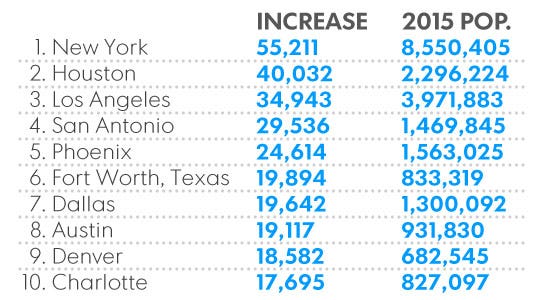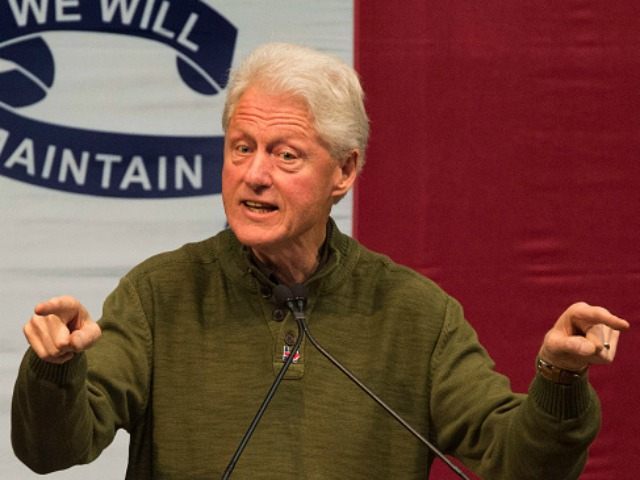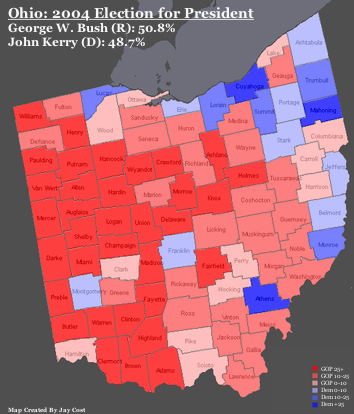Would abolishing the Electoral College really be grass-roots progressivism?
The 2016 popular vote and the Electoral College
One result of the 2016 elections is the new call to abolish the Electoral College. This move is supported by some progressives, but it is a sad divagation for progressivism. To throw away a huge swath of the polity, to cut large areas of thin population density out of the polity–this is grass roots?
Principle aside, supporters of eliminating the Electoral College should beware unintended consequences. In other words, try to figure out what abolishing it would actually accomplish. Predictions are dicey, but so far as can be predicted now, one effect of abolishing the Electors would be to magnify the importance of cities or metropolitan areas beyond even their current importance in elections.

U.S. population growth: cities
Full disclosure: As someone who grew up in Houston and lives in the metropolitan Washington, D.C., area, I myself love cities. In America’s tiny towns there would be few jobs for me–or for the host of our many-times-wrong cable commentators. (Hence the ‘flyover’ perspective often seen in media.) But throwing away our ‘country’ in elections is waste on a grand scale. On principle, I support maximizing nationwide participation at the grass roots. Therefore I am against the converse, whether it is represented as rejecting Howard Dean’s ’50-states’ strategy (why was that rejected?), repudiating the Deep South, or in Barry Goldwater’s words, cutting off the Eastern Seaboard and letting it float out to sea. (At least back in Goldwater’s time, nobody called it commentary, let alone political science.) Also, I would have liked to see Texas metro areas get more attention from national Democrats. I got my start in political volunteering in high school, licking envelopes for Sissy Farenthold and Frankie Randolph. If direct election by voters would help, I’m all for it.
But that it would help is not a given. Looking at the last two years and focusing a bit more on people than on ‘demographics’, Texas cities would seem to have held rich potential for Democrats. The dozen largest U.S. cities-metro areas in 2015 included Dallas-Fort Worth and Houston, combined population more than 13.6 million. Add Austin for another two million-plus and the San Antonio region for another 2.3 million-plus. Furthermore, these Texas cities are growing, a trend projected to continue; they will be even more vote-rich targets in 2020 than now. But would Texas cities–still harping on my hometown–actually receive the attention from national campaigns that their population would seem to justify? If so, why don’t they receive it now? According to the U.S. census, the population of Texas is about 27.4 million. The metropolitan areas named add up to more than 18 million, more than half the state total, conveniently findable in areas where people live close to each other. Not that whole Houston neighborhoods would likely be driving across each other’s front yards to hear a candidate, like people getting their cars out of the way of a hurricane, but still–you’d think they would be reachable. Other Texas metro regions are also growing fast, as reported in this article from the estimable Texas Tribune.
Added to the above data is the fact that Democratic candidates ousted Republicans in Houston-Harris County in November 2016. In fact, Democrats defeated all the GOP judges in Harris county, along with a new sheriff whose first moves in office had included demoting all non-white, non-males in his command staff. A gay woman also defeated the female District Attorney. According to an old friend, this was probably because “the sitting DA jailed a rape victim for 30 days because the victim fell apart on the stand at the rapist’s trial and the DA was concerned that the victim, who had mental illness issues, would not return when the trial continued. The victim was held in the county jail, not a mental health facility, for 30 days.”
Such are the times when genuine grass-roots progressivism is needed–and it happened in Harris County, ‘Red State’ or no. So if votes are desired, and direct participation is encouraged, why don’t the Democrats and others upset about the Electoral College spend more time and attention in Texas now? After all, in the Electoral College, Texas has 38 votes.

Electoral College 2016
You see where I’m going with this. If a national Democratic Party doesn’t campaign in Texas now, with the combined prizes of popular vote and 38 Electors, what is the guarantee that it would campaign in Texas for the popular vote alone?
Yes, Austin is a long way from Madison, Wisconsin. But the same question arises in regard to Wisconsin, Michigan, and Pennsylvania. As written in the previous post, one problem with the abolish-the-Electoral-College picture is that it is hard to envision these three ‘Rust Belt’ states getting more attention without the prize of Electoral votes than they got in 2016 with a combined 46 Electoral votes, or 17 percent of the total needed to win the White House. Adding Ohio, Iowa, Indiana, Minnesota, and Illinois constitutes 41 percent. But as written, this entire block of Electoral votes outside Illinois was written off by the Clinton campaign with its ‘electable’ candidate. The ‘Rust Belt’ perspective in the media seems to have been matched in the campaign.
For further perspective, let’s go to another state, even more vote-rich than Texas, with large populations concentrated in metro areas–California. It is essential to note that California is the source of Secretary Clinton’s popular vote lead. This spreadsheet from Cook Political Report puts Clinton’s lead over Trump nationally at more than 2.6 million. Subtract California from the votes for each candidate, however, and Trump leads Clinton by 1.6 million votes nationally. The Clinton lead comes from the yawning gulf of 4.2 votes in California, the state which singly produced more than 13 percent of Clinton’s votes–more than twice as many as New York State, more than the total of all the smaller ‘blue states’ combined, and more than Florida and Texas combined.
(As of this writing: 62,808,243 – 4,463,932 = 58,344,311 Trump. 65,462,476 – 8,719,198 = 56,743,278 Clinton.)
Thus if the Electoral College were abolished, any national Democratic campaign would have to devote time and resources to California for the sake of its popular votes alone. Mentioning Clinton’s popular vote lead is the short argument for abolishing the Electoral College (though without mentioning that most of the lead comes from California). Indeed, one could guess that national Democrats would focus on California more than on any other single part of the country.
So what might the reckoning be? For a start, nothing in this picture screams that voters in smaller states would necessarily get more attention, even on the coasts.
But in terms of campaigning, there is a rawer point. In this picture, if what appeals to California voters also appeals to the nation at large, all is well. But suppose there were some divide? Suppose what pleased California did not equally please the nation at large, and vice versa, or did not equally please Wisconsin, Michigan, and Pennsylvania? Again, wasn’t that the situation this time?
Moving from past to future, let’s get really creative, or fiendish. Those three little words that mean so much . . .

San Andreas Fault map
San Andreas Fault
Suppose someone were to remind the nation, as the late Molly Ivins did back in the 1990s, that the U.S. economy underwrites real estate development on the San Andreas Fault. Saturn-like real estate prices in California rest economically on factors including population, climate, and high-profile industries. They rest politically on ignoring the risk. They rest geologically on the meeting of two tectonic plates. Suppose someone were to present a rational proposal addressing this geological fact? (Far-fetched, I know, but use your imagination.) What would that do to a national campaign concentrating a third of its resources on California?
Going a little deeper, what would it do to the polity, to ask the rest of the nation to bail out California real estate and developers building full-steam-ahead in California? To ask the rest of the nation to bail out insurers in California?
If the entire nation actually got a vote, how would that vote turn out?











